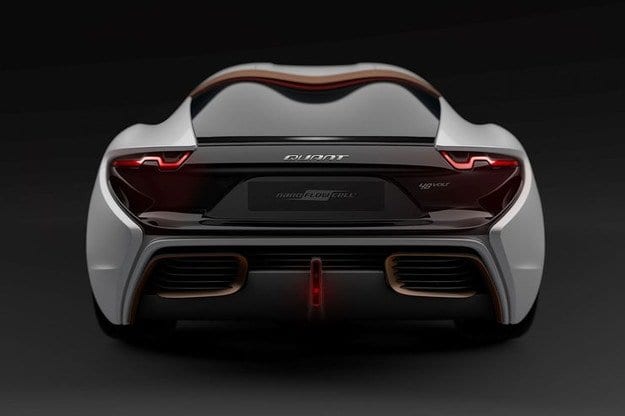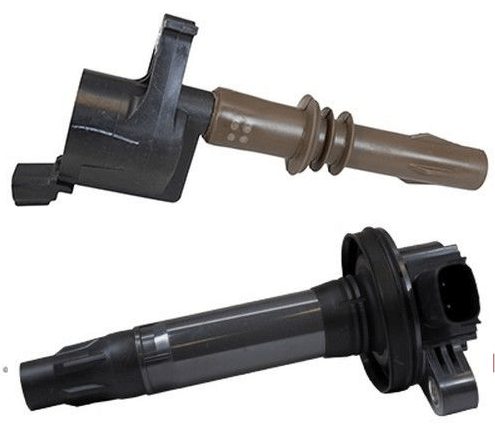
Test drive QUANT 48VOLT: revolution in the automotive industry or ...

760 h.p. and acceleration in 2,4 seconds demonstrates the capabilities of the accumulator
He's lost in the shadows of Elon Musk and his Tesla, but Nuncio La Vecchio and his team's technology, used by research firm nanoFlowcell, could really revolutionize the automotive industry. The latest creation from the Swiss company is the studio QUANT 48VOLT, which follows the smaller QUANTINO 48VOLT and several previous concept models such as the QUANT F that did not yet use 48-volt technology.
Remaining in the twilight of the automotive industry's turmoil in recent years, NanoFlowcell decides to redirect its development potential and develop the technology of so-called instantaneous batteries, which in their work have nothing to do with nickel-metal hydride and lithium-ion. However, a closer examination of the QUANT 48VOLT studio will reveal unique technological solutions - not only in terms of the aforementioned way of generating electricity, but also the overall 48V circuit with multi-phase electric motors with aluminum coils built into the wheels, and a total output of 760 horsepower. Of course, many questions arise.
Flow batteries - what are they?
A number of research companies and institutes, such as Fraunhofer in Germany, have been developing batteries for electric current for more than ten years.
These are batteries, or rather, elements similar to fuel, which are filled with liquid, like fuel is poured into a car with a gasoline or diesel engine. In fact, the idea of a flow-through or so-called flow-through redox battery is not difficult, and the first patent in this area dates back to 1949. Each of the two cell spaces, separated by a membrane (similar to fuel cells), is connected to a reservoir containing a specific electrolyte. Due to the tendency of substances to chemically react with each other, protons are transferred from one electrolyte to another through the membrane, and electrons are directed through a current consumer connected to two parts, as a result of which an electric current flows. After a certain time, two tanks are drained and filled with fresh electrolyte, and the used one is "recycled" at charging stations. The system is operated by pumps.
While this all looks great, unfortunately there are still many obstacles to the practical use of this type of battery in cars. The energy density of a redox battery with vanadium electrolyte is in the range of only 30-50 Wh per liter, which roughly corresponds to that of a lead-acid battery. In this case, in order to store the same amount of energy as in a modern lithium-ion battery with a capacity of 20 kWh, at the same technological level of a redox battery, 500 liters of electrolyte will be required. In laboratory conditions, the so-called vanadium bromide polysulfide batteries achieve an energy density of 90 Wh per liter.
Exotic materials are not required for the production of flow-through redox batteries. No expensive catalysts such as platinum used in fuel cells or polymers such as lithium ion batteries are required. The high cost of laboratory systems is due only to the fact that they are one-of-a-kind and are made by hand. As far as security is concerned, there is no danger. When two electrolytes are mixed, a chemical "short circuit" occurs, in which heat is released and the temperature rises, but remains at safe values, and nothing else happens. Of course, liquids alone are not safe, but neither are gasoline and diesel.
Revolutionary nanoFlowcell technology
After years of research, nanoFlowcell has developed a technology that does not reuse electrolytes. The company does not give details about the chemical processes, but the fact is that the specific energy of their bi-ion system reaches an incredible 600 W / l and thus makes it possible to provide such enormous power to electric motors. To do this, six cells with a voltage of 48 volts are connected in parallel, capable of providing electricity to a system with a capacity of 760 hp. This technology uses a nanotechnology-based membrane developed by nanoFlowcell to provide a large contact surface and allow large amounts of electrolyte to be replaced in a short time. In the future, this will also allow the processing of electrolyte solutions with a higher energy concentration. Since the system does not use high voltage as before, buffer capacitors are eliminated - the new elements directly feed the electric motors and have a large output power. QUANT also has an efficient mode where some of the cells are turned off and power is reduced in the name of efficiency. However, when power is needed, it is available - due to the huge torque of 2000 Nm per wheel (only 8000 Nm according to the company), acceleration to 100 km / h takes 2,4 seconds, and the top speed is electronically limited to 300 km. / h For such parameters, it is quite natural not to use a transmission - four 140 kW electric motors are integrated directly into the wheel hubs.
Revolutionary in nature electric motors
A small miracle of technology is the electric motors themselves. Because they operate at an extremely low voltage of 48 volts, they are not 3-phase, but 45-phase! Instead of copper coils, they use an aluminum lattice structure to reduce volume - which is especially important given the huge currents. According to simple physics, with a power of 140 kW per electric motor and a voltage of 48 volts, the current flowing through it should be 2900 amperes. It is no coincidence that nanoFlowcell announces XNUMXA values for the entire system. In this regard, the laws of large numbers really work here. The company does not disclose which systems are used to transmit such currents. However, the advantage of low voltage is that high voltage protection systems are not required, reducing the cost of the product. It also allows the use of cheaper MOSFETs (Metal Oxide Semiconductor Field Effect Transistors) instead of the more expensive HV IGBTs (High Voltage Insulated Gate Bipolar Transistors).
Neither the electric motors nor the system should move slowly after several dynamic cooling accelerations.
Large tanks have a volume of 2 x 250 liters and, according to nanoFlowcell, cells with an operating temperature of around 96 degrees are 90 percent efficient. They are integrated into the tunnel in the floor structure and contribute to the vehicle's low center of gravity. During operation, the vehicle emits splashes of water, and salts from the spent electrolyte are collected in a special filter and separated every 10 km. However, it is not clear from the official press release on 000 pages how much the car consumes per 40 km, and there is obviously vague information. The company claims that one liter of bi-ION costs 100 euros. For tanks with a volume of 0,10 x 2 liters and an estimated mileage of 250 km, this means 1000 liters per 50 km, which is again advantageous against the background of fuel prices (a separate issue of weight). However, the declared system capacity of 100 kWh, which corresponds to 300 kWh / l, means a consumption of 600 kWh per 30 km, which is a lot. The smaller Quantino, for example, has 100 x 2 liter tanks that deliver (reportedly) only 95 kWh (probably 15?), And claims 115 km mileage at 1000 kWh per 14 km. These are obvious inconsistencies ...
All that aside, both the drive technology and the car's design are stunning, which in itself is unique to a start-up company. The space frame and the materials from which the body is made are also high-tech. But this already seems conditional against the background of such a drive. Equally important, the vehicle is TUV certified for driving on the German road network and ready for series production. What should start in Switzerland next year.
Text: Georgy Kolev
Home " Articles " Blanks » QUANT 48VOLT: revolution in the automotive industry or ...

